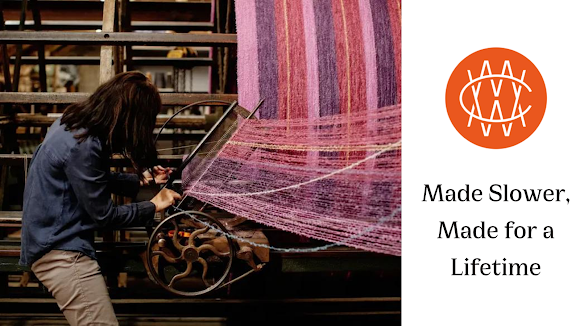Why Lambswool is the Softest Wool You Can Wear
In Ireland, which has a centuries-old wool industry and lush meadows, lambswool is highly valued. Lambswool products are the preferred option for opulent softness and useful practicalities, whether you're looking for comfort on a cool morning or layering for a chilly evening walk around the Cliffs of Moher. But why is lambswool the softest wool available for clothing? Let's explore its history, characteristics, and the reasons it is so widely cherished.
The Origins of Lambswool
The first shearing of a lamb, usually when the sheep is no older than seven months, is the source of lambswool. Lambswool differs from other kinds of wool in that it produces a remarkably smooth, silky, and fine fiber from this initial clip. Lambswool is the perfect material for comfortable clothing and accessories because its fibers are smooth and have a delicate touch, unlike the coarser wool from older sheep.Ireland's rich surroundings make it the ideal place for sheep to graze, which adds to the high caliber of Irish lambswool. Shearing and processing techniques have been refined by generations of farmers and wool producers, guaranteeing that the wool maintains its inherent characteristics while satisfying contemporary needs for sustainability and softness.
What Makes Lambswool So Soft?
Fiber DiameterThe fiber diameter of lambswool is finer than that of other wools. The coarse scales found in mature wool are absent from the naturally thin fibers. A softer, smoother texture that is kind to the skin is the result of this tiny structure.
Elasticity and Lightweight Nature
Because of its flexibility, lambswool fits snugly but breathablely by conforming to the wearer's body. Lambswool's appeal as a versatile textile for all-season use is increased by the fact that, despite its softness, it is lightweight.
Natural Lanolin
The natural lanolin found in lambswool adds to its silky texture. In addition to enhancing the wool's opulent softness, lanolin provides a layer of natural moisture to protect the skin.
Hypoallergenic Benefits of Lambswool
Apart from its well-known softness, lambswool is hypoallergenic, which makes it appropriate for people with sensitive skin. This is the reason:Minimal Irritation
Lambswool is less prone to irritate or cause irritation because it doesn't include coarse fibers. In contrast to synthetic materials or inferior wools, lambswool has a calming, non-abrasive feel.
Natural Breathability
Because lambswool fibers are inherently permeable, air can circulate, which lessens the possibility of skin discomfort from moisture or heat buildup.
Dust Mite Resistant
Due to its inherent qualities, lambswool is impervious to dust mites, which are frequently the cause of allergic reactions. For sensitive people, this trait guarantees that lambswool bedding and clothing are a healthy option.
Versatile Uses of Lambswool Products
Because of its special blend of hypoallergenic qualities and softness, lambswool is used in many different products:- Clothes: Lambswool clothing, such as gloves, scarves, and sweaters, is highly valued for its warmth and comfort without adding bulk.
- Home accessories: Throws, pillows, and blankets made of lambswool give a cozy touch to any area.
- Luxury Goods: Tailored suits, jackets, and other high-end clothing frequently feature lambswool.
Whether you're relaxing at home or dressing up for a particular event, the adaptability of lambswool products guarantees that you may make use of its advantages in a variety of ways.
Lambswool vs. Other Types of Wool
It's crucial to contrast lambswool with other common varieties of wool to fully understand how soft it is:- Merino Wool: Lambswool's first-shear fibers are unparalleled in their smoothness and silk-like feel, even though Merino wool is extremely soft and fine.
- Cashmere: Although cashmere is frequently thought of as the ultimate in luxury, lambswool provides a less expensive alternative that is just as warm and silky.
- Traditional Wool: Lambswool is the favored option for comfort because regular wool, which comes from older sheep, tends to be rougher and less breathable.
Sustainability and Lambswool
Lambswool distinguishes out as an environmentally friendly material in a time when sustainability is crucial. Every year, sheep are sheared to ensure a sustainable supply of wool without endangering the animals. Additionally, compared to synthetic alternatives, lambswool products have a lower environmental impact because they are biodegradable.Ireland's dedication to environmentally friendly farming methods makes its lambswool even more alluring. To ensure that every lambswool product reflects both quality and environmental stewardship, many Irish wool producers use traditional methods that reduce waste and protect local ecosystems.
Caring for Lambswool Products
Proper care is necessary to preserve the longevity and suppleness of lambswool products:- Hand washing: To maintain the inherent qualities of the fibers, use lukewarm water and a mild wool detergent.
- Drying: Avoid direct sunshine or heat sources that could cause shrinkage and lay flat to dry.
- Storage: Keep dry and cool, and keep moths away with lavender sachets or cedar blocks.
Conclusion
More than just a substance, lambswool is a tactile sensation that exudes coziness, excellence, and nurturing. It is the ideal option for anyone looking for warmth and elegance in their home or wardrobe because of its unmatched softness, hypoallergenic qualities, and adaptability.Lambswool products, whether they are fashioned into a warm Irish-made sweater or a gorgeously woven throw, are a monument to Ireland's rich wool tradition and the remarkable fiber's timeless appeal. Therefore, keep in mind that nothing feels quite as soft as lambswool the next time you're craving a little indulgence.

.png)
.png)

Comments
Post a Comment